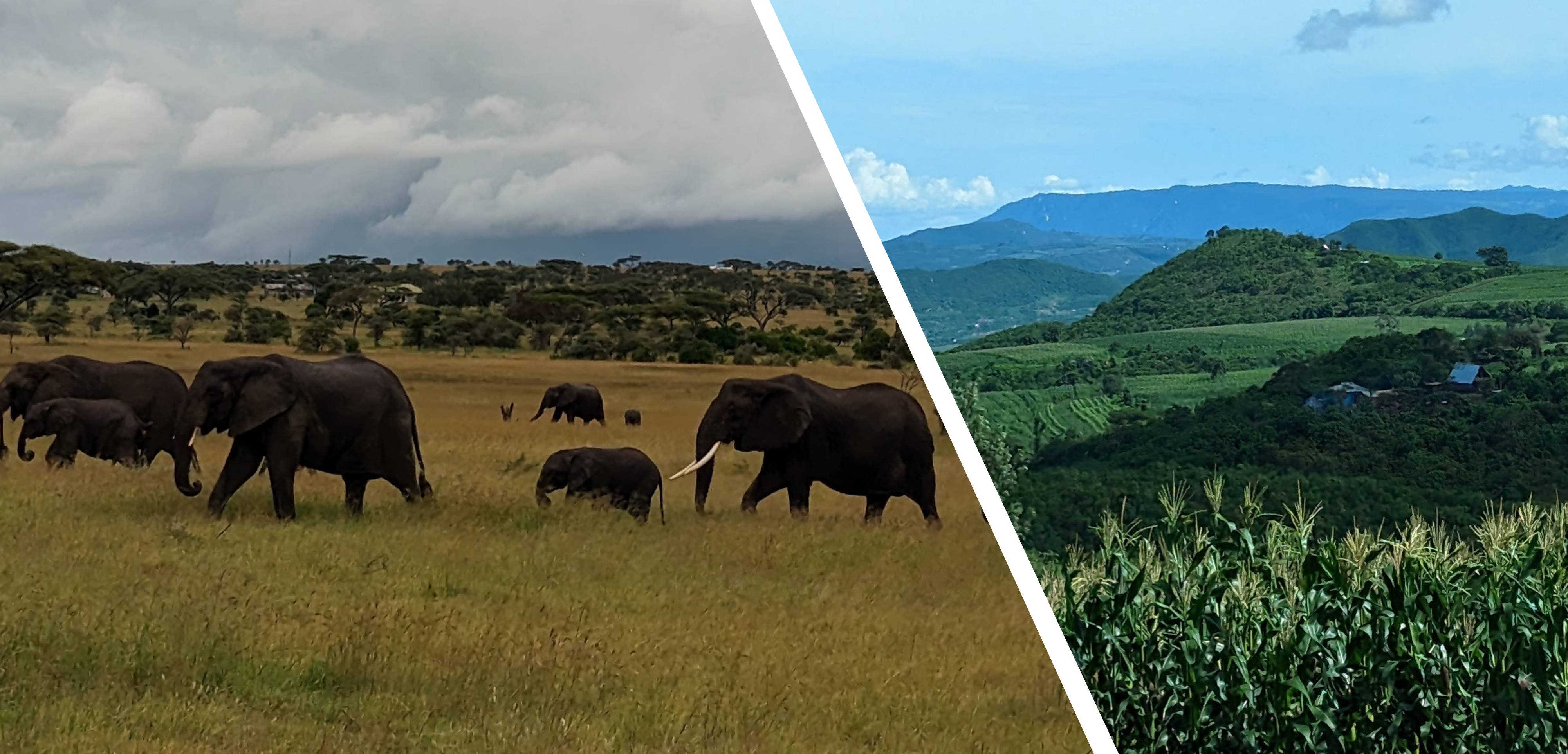Agriculture-elephants

PhD Dissertation Project
Funding: NASA FINESST (award number: 80NSSC20K1640)
Role: Student Future Investigator (PI: Dr.Lyndon Estes )
Introduction
Agriculture will lead to significant biodiversity loss in Africa within the next few decades, as the region’s agricultural systems adapt to meet rapidly growing food security challenges arising from rapid economic and population growth and climate change. Currently, agricultural expansion is the primary means of achieving growth in production. As expansion continues to rearrange our world, reconciling agricultural demands with the maintenance of biodiversity remains a critical challenge for conservation and livelihood. In this project, I utilize a suite of Earth Observation (EO) products and cutting-edge modeling techniques to examine conservation strategies that try to balance between the demand for agriculture and the need for maintaining elephant habitat connectivity in a landscape fragmented by agriculture.
Structure
Chapter 1 introduced a novel mapping framework that enables the rapid generation of high-quality land cover labels by leveraging existing land cover products. This was followed by the training of a deep learning (DL) model for land cover mapping.
Chapter 2 introduced an R CRAN package for species distribution modeling (SDM) using the Isolation Forest algorithm. It also presented a technique based on Shapley values for model explanation.
Chapter 3 evaluated the environmental suitability and simulated habitat connectivity required for elephant survival. This analysis utilized the high-resolution land cover map created in Chapter 1, in combination with climatic, topographic, and anthropological data. Critical corridors, which are currently occupied or soon to be occupied by agriculture, were identified. Additionally, conservation recommendations were provided to preserve essential habitat connectivity for elephants and support a viable population.
Chapter 4 explored regions suitable for future agriculture expansion, with an emphasis on optimizing crop production benefits while ensuring sustainable connectivity of elephant habitats. Other ecological objectives were also taken into consideration.
Articles, Code & Datasets
Song, L., Estes, A. B., & Estes, L. D. (2023). A super-ensemble approach to map land cover types with high resolution over data-sparse African savanna landscapes. International Journal of Applied Earth Observation and Geoinformation, 116, 103152. [PDF] [CODE] [DATA]
Song, L., & Estes, L. (2023). itsdm: Isolation forest-based presence-only species distribution modelling and explanation in r. Methods in Ecology and Evolution, 14(3), 831-840. [PDF] [CODE] [DATA]
Working papers
Song, L., Estes, A. B. & Estes, L. D. A national, multi-scale assessment of habitat connectivity of African savanna elephant (Loxodonta africana). Submitted to Biological Conservation.
Song, L., Estes, A. B. & Estes, L. D. Cropland allocation to minimize agriculture-elephant conflict with consideration of biodiversity and carbon costs. To be submitted to the Journal of Applied Ecology.
Disssertation
Song, L. (2023). Combining Spatially-Explicit Simulation of Animal Movement and Earth Observation to Reconcile Agriculture and Wildlife Conservation (Doctoral dissertation, Clark University). [ProQuest]
